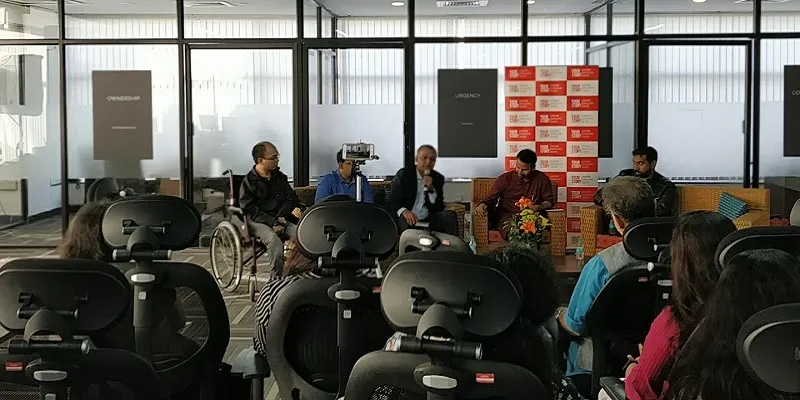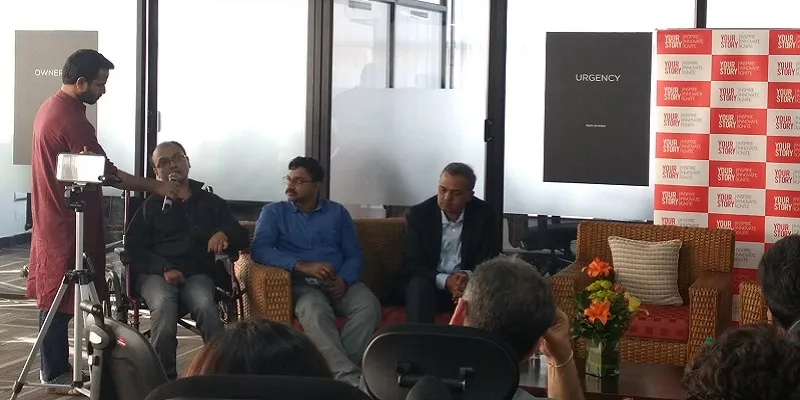How technology is empowering the lives of people from specially-abled communities
Panels discuss the importance of sensitising the public and raising awareness along with harnessing technology to empower India’s specially-abled people.

In line with our previous attempts to chronicle journeys of the specially-abled, and build dialogue around inclusion and accessibility, SocialStory, a vertical of YourStory, organized a month-long campaign on making India inclusive.
The campaign discussed various issues around accessibility, and invited leaders and changemakers to share their views and opinions.
As part of the Inclusive India campaign, we partnered with organisations like Sarthak Educational Trust, Enable India, and National Centre for Promotion of Employment for Disabled People among others. These organisations have played a significant role in paving the way towards a more inclusive society.
The campaign, which started on November 6, culminated with a special event on December 8, where experts and changemakers working in the inclusion sector shared their views in two insightful panel discussions.
The key role of assistive technologies
The first panel, which discussed the “Role of technology in empowering specially-abled”, was moderated by Alok Soni, from YourStory. The four panelists included Ashwin Karthik, a Business Analyst with ANZ; Manickavelu M, Programme Director at Mindtree Foundation; Moses Chowdary Gorrepati, Head of Enable Vision cell at Enable India; and Arun Cherian, Innovation Consultant to the International Committee of the Red Cross.
The discussion started by acknowledging the flaws with the Indian Census in assessing the number of persons with disability in India. Taking the discussion further, Moses Chowdary discussed the larger issue of acceptance.
“Till today, there are apprehensions about bringing disabled people into open spaces in rural areas. Considered a bad omen, most specially-abled people are confined to their rooms. So, it is a lot to do with changing mindsets and encouraging acceptance than getting the Census count right.”
Ashwin Karthik, who graduated as India’s first engineer with Cerebral Palsy, said, “Apart from public sensitisation, individual awareness is needed - a differently-abled person must be educated about how s/he is different from others. This also helps bridge gaps and offers opportunities to excel in various fields.”
Making way for the differently-abled
Narrating an interesting experience, Ashwin said,
“When you make way for the specially-abled, you automatically make for way others and create opportunities for revenue generation as well.”
Reiterating the important role of technology in enabling differently-abled people, Moses, who is visually-impaired, said, “Technological solutions have been a gamechanger in our lives, giving us control of our own lives. They have opened up job opportunities for people from the differently-abled community, opportunities that were not viable earlier.”
Adding to the discussion, Arun Cherian said,
“Technology has indeed been a tool that enabled many special-abled. However, the need of the hour is to provide high-quality, innovative, and helpful technologies at cost-effective rates. It is essential to ensure that there is a healthy ecosystem (through policies, subsidies, and CSR efforts) that sustains and helps these kinds of technologies roll out into the market.”
Demand for cost-effective assistive technologies
Sharing his experience of how owning an automatic wheelchair changed his life, Ashwin said, “There are numerous examples of how technology has empowered me. Earlier, I couldn’t take a phone call on my own. However, with the advent of Bluetooth, I now hold meetings on my phone.”

Ashwin also mentioned his personal wish list of innovations that can benefit many more differently-abled people like him.
“The Android 7.1 software had a feature where you could directly transfer the phone call to the Bluetooth after a certain number of rings. Now, they have disabled this rather helpful tool.”
“There is software that enable people to shake their phone to answer the call. But what about those people with no hands? When we can invest in movies like Bahubaali, we should also invest in computer program algorithms that help differently-abled students do their chemistry experiments in a virtual setup,” he added.
Manickavelu, another panelist, spoke about the role of internet in the functioning of these assistive technologies.
“Only 13 percent of gram panchayats in India have access to the internet. One of the biggest tasks is to also make technologies sustain on their own by taking them offline,” he said.
“It is an interesting trend to note that a lot of these assistive technologies are now becoming open-sourced. Moreover, the youth of this country is also taking up social challenges and solving it through their innovations,” he added.







